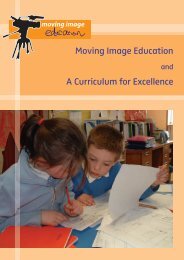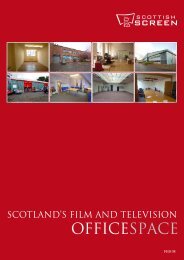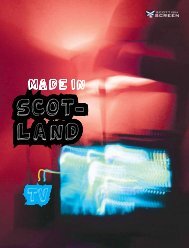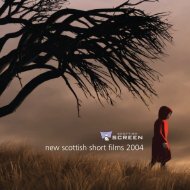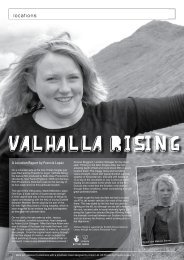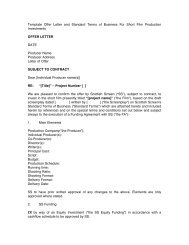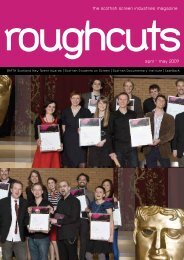Evaluation - Scottish Screen
Evaluation - Scottish Screen
Evaluation - Scottish Screen
You also want an ePaper? Increase the reach of your titles
YUMPU automatically turns print PDFs into web optimized ePapers that Google loves.
from the lead practitioners and developed it further. This is further indicative of a huge<br />
increase in teachers’ confidence in and perception of the value of MIE.<br />
The impact most reported by both teachers and pupils, however, related to confidence.<br />
Teachers reported considerable increases in all children’s confidence and this was confirmed<br />
by evidence from focus groups and observations.<br />
Teachers and pupils alike attributed increased confidence to the fact that everyone has a<br />
contribution to make and that all contributions are valued. This applied to both the analytical<br />
aspect of MIE in which all pupils’ ideas are treated with respect and dignity and explored<br />
fully, and to the creative side in which pride in the production of quality moving images<br />
promoted confidence. It is significant that it was not only teachers who were aware of<br />
increased confidence but the pupils were able to identify increased confidence in themselves<br />
and each other. Teachers made specific comment regarding the potential to engage pupils<br />
who struggle with ‘traditional’ reading. Perhaps most significantly, however, all participants<br />
reported that MIE was fun.<br />
The aspiration that proved most difficult to achieve was critical connectedness. <strong>Scottish</strong><br />
<strong>Screen</strong> had hoped that, through a process of developing the ability to critique film and other<br />
moving images, including their own, pupils and teachers would become more critically aware<br />
of school, their education and events in the world, generally. Whilst many participants<br />
reported an increased critical awareness of film, there was little evidence of a development of<br />
critical capacity, generally.<br />
Teachers were able to identify a range of learning outcomes, some of which could also apply<br />
to a range of curricular areas but which were felt to be particularly attainable through<br />
engaging with MIE. These included collaborative learning, taking responsibility, and critical<br />
analysis. In addition, learning outcomes which were felt to be specific to MIE were also<br />
identified. These were:<br />
Enhanced skills in the use of cameras, ICT and digital media.<br />
Better understanding of the use of words, lighting and effects<br />
Generation of a script<br />
Observation skills<br />
learning the techniques and language of film making<br />
the development of literacy in a multi-media society<br />
Effectiveness and Sustainability of the Professional Development Programme model<br />
Evidence from the data gathered indicates that the lead practitioner model is a highly<br />
effective means of introducing MIE to schools. Teachers appreciated the opportunity to<br />
observe and learn from experts in the field and the pedagogical and technical support that was<br />
available throughout the course of the initiatives. However, this places a great deal of<br />
responsibility on the lead practitioners and has implications for their own professional<br />
development.<br />
In addition, as identified within our research and remarked upon by the lead practitioner in<br />
cluster B, there are also considerable implications for headteachers and local authorities.<br />
54





